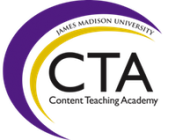Cell Parts: Exploring cell structure and function
The student will investigate and understand relationships between cell structure and function. Key concepts include a) evidence supporting the cell theory b) characteristics of prokaryotic and eukaryotic cells; c) similarities between the activities of the organelles in a single cell and a whole organism.
BIO.4 The student will investigate and understand life functions of Archaea, Bacteria, and Eukarya. Key concepts include c) how the structures and functions vary among and within the Eukarya kingdoms of protists, fungi, plants, and animals, including humans.
